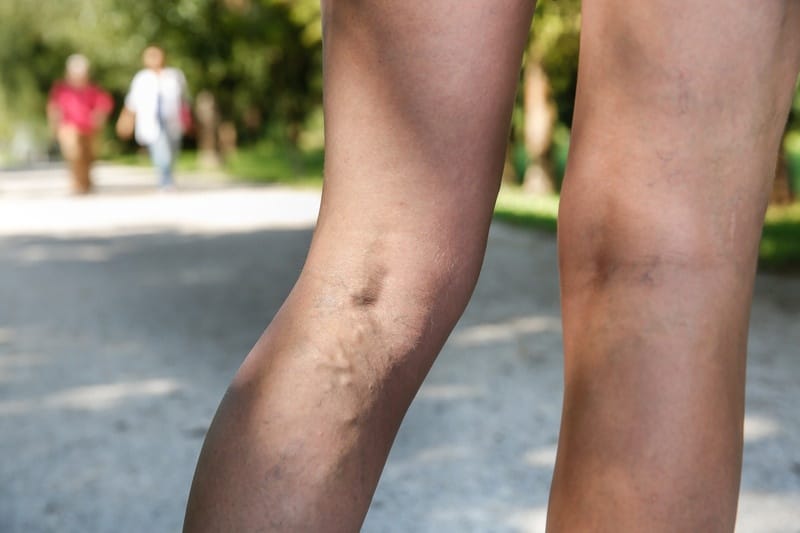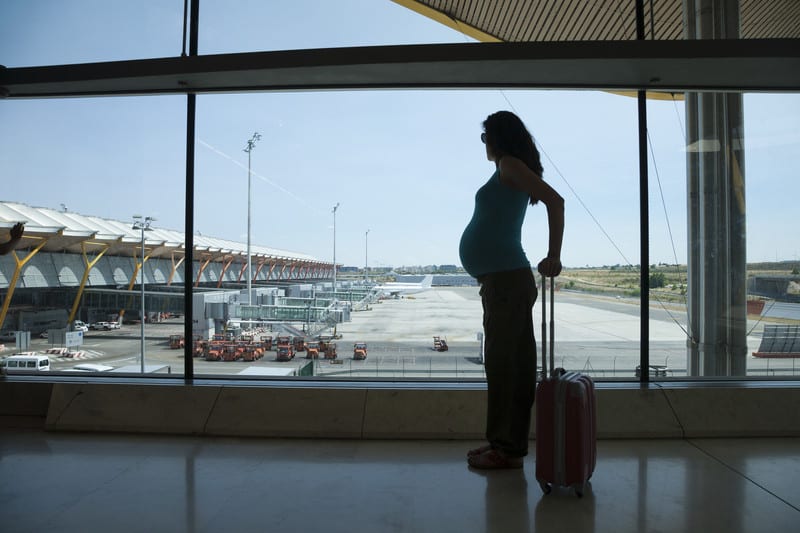Can Varicose Vein Pain be Eliminated?
Can Varicose Vein Pain be Eliminated?
It is the end of a long day, and suddenly you realize that the varicose veins that you barely considered this morning are working hard to get your attention. They ache, and your legs feel heavy and are getting swollen. Especially if you have been ignoring them all day, it is important to give your legs some attention, both for your immediate comfort and for your long-term health.
Much of varicose vein pain is caused by the pressure exerted by distended veins on the surrounding tissue. This pressure can be exacerbated by inflammatory agents your body releases in response to this injury.
Your Best Option for Minimizing Varicose Vein Pain
If you are experiencing pain associated with your varicose veins, you may need the help of a qualified vein specialist to determine whether your vascular health is at risk. After an examination, they may be able to recommend a minimally invasive procedure that will ease your discomfort, or even eliminate your pain.
Arizona Vein Specialists
In the meantime, there are some simple short-term solutions for varicose vein discomfort. They take a little time and effort, but they can be worth it.
Varicose Veins Home Treatment
The first thing to do is take a load off, elevate your legs. Lifting your feet, so they are level or slightly elevated above your heart helps to move out blood that has been pooling all day. It also takes some strain off your heart.
After that, do everything you can to keep things moving. Staying active will help to prevent pooling blood from exerting painful pressure on your muscles and skin, and will help minimize the collection of metabolic waste products collecting in distended areas.
- Avoid sitting or standing for long periods. As much as possible, move around throughout the day.
- Avoid tight clothing and don’t cross your legs when sitting.
- Compression stockings that are prescribed by a vein specialist may offer some relief, and further, improve venous return as you go about your activities.
- Alternating warm and cool compresses on the area can help to move the excess fluid that has become lodged in the tissue of the lower limbs and is exacerbating your pain.
Take care of the inflammation
Histamines and other inflammatory agents that your body releases in response to the trauma of varicose veins can increase your pain. While oral medications are not typically prescribed for varicose veins, some doctors recommend anti-inflammatories such as ibuprofen to deal with discomfort. However, these medications can take their toll on the stomach, as well as the liver and kidneys.
Some experts suggest naturopathic pain relievers, such as Horse Chestnut, Arnica Montana, and white willow bark for their anti-inflammatory and blood vessel dilating properties. Before you try them, ensure that these substances do not interact with any other medications you may be taking.
Consider your diet
Eating a balanced diet is essential for health and healing, and, as such, can help to minimize varicose vein discomfort. On the other hand, eating a diet high in inflammation-causing foods, such as sugar, trans fats, and allergens, can have the opposite effect, increasing pain levels and other symptoms.
Watch out for signs that your varicose veins are getting worse. If your varicose vein pain suddenly becomes intense or is accompanied by localized redness, swelling and heat, please seek medical attention immediately. These could be signs of Deep Vein Thrombosis.
Varicose Vein Pain Next Steps
Keep in mind that if you are experiencing pain or other symptoms associated with varicose veins, and homeopathic treatments don’t provide relief, you may be one of 30 million American men and women who are affected by Venous Reflux Disease, or Chronic Venous Insufficiency (CVI).
Consider getting a complete venous evaluation and possible treatment from a qualified vein specialist to defend against varicose vein pain and ensure your long-term vascular health.
DVT and Varicose Veins during Pregnancy Pregnancy is a risk factor for the development of a blood clots with an incidence that is 4 to 50 times higher compared to non-pregnant women. Increased risk for development of a blood clot is highest in the postpartum period, with the most common occurrence of clot formation in…
Read MoreDeep Vein Thrombosis and Travel Ready to enjoy some summer time travel? Make sure your trip is not shortened by a serious health concern. Small, cramped seating on an airplane, or sitting in a car for a prolonged period of time, may be more of a problem that just causing discomfort. Inactivity in a confined…
Read MoreIn the second of this educational video series, Jilanne Rose talks about the pain involved in various Varicose Vein Treatments. In some cases it’s negligible! Transcript The ease with which we can eliminate varicose veins depends solely on what type of underlying problems you have. That question can’t be easily answered until after a thorough…
Read MoreWhat is Restless Leg Syndrome Restless leg syndrome (RLS), also called Willis-Ekbom disease (WED), is a common sleep-related movement disorder characterized by an unpleasant urge to move the legs. Symptoms often occur during periods of inactivity; particularly in the evenings. This urge to move is sometimes relieved by moving ones legs. During sleep, most patients’…
Read MoreOur own Dr. Jilanne Rose answers questions on Varicose Veins, Spider Veins, Vein Treatments and Insurance Coverage for Vein Treatment in Arizona. Jilanne is a true Varicose Vein Specialist as she has years of education and has been trained by the top experts in the field. She has performed over 10,000 vein care procedures herself. This is one…
Read MoreRisks of Deep Vein Thrombosis Deep Vein Thrombosis (DVT), also referred to as Deep Venous Thrombosis, is a blood clot located within a deep vein, usually in the leg. A blood clot that breaks free and travels up to the heart or lungs is referred to as a Pulmonary Embolism (PE), which can stop blood…
Read MoreWhat Causes Spider Veins? For many people who suffer from spider veins, one of their biggest questions is “What causes spider veins?” Spider Veins, also known as telangiectasia, are small veins located just under the surface of the skin. Most often found on the leg, they can either be very small and hardly noticeable, or…
Read MoreAre varicose veins covered by insurance? The answer is YES, varicose vein treatment is covered by most commercial insurance carriers such as Blue Cross Blue Shield, Champus, Aetna, Cigna, Humana, Health Net, Tricare, UMR, and UnitedHealthCare to name a few. Medicare and AHCCCS will also cover treatment. Many people only try home treatment for varicose veins…
Read MoreAre all vein clinics created equal? No they are not! Med Spa – You can turn on the television or radio at any time of the day and hear countless advertisements for “quick” or “painless” vein treatments. Go to this clinic or that medspa, and they assure you that your legs will look great in no…
Read MoreAside from conservative therapies for vein insufficiency, when your symptoms get to the point that these no longer work, or you want a more permanent solution, there are several methods to treat vein disease. All of them, regardless of method, aim to improve circulation and minimize symptoms by eliminating the abnormal vein. These methods include…
Read More





